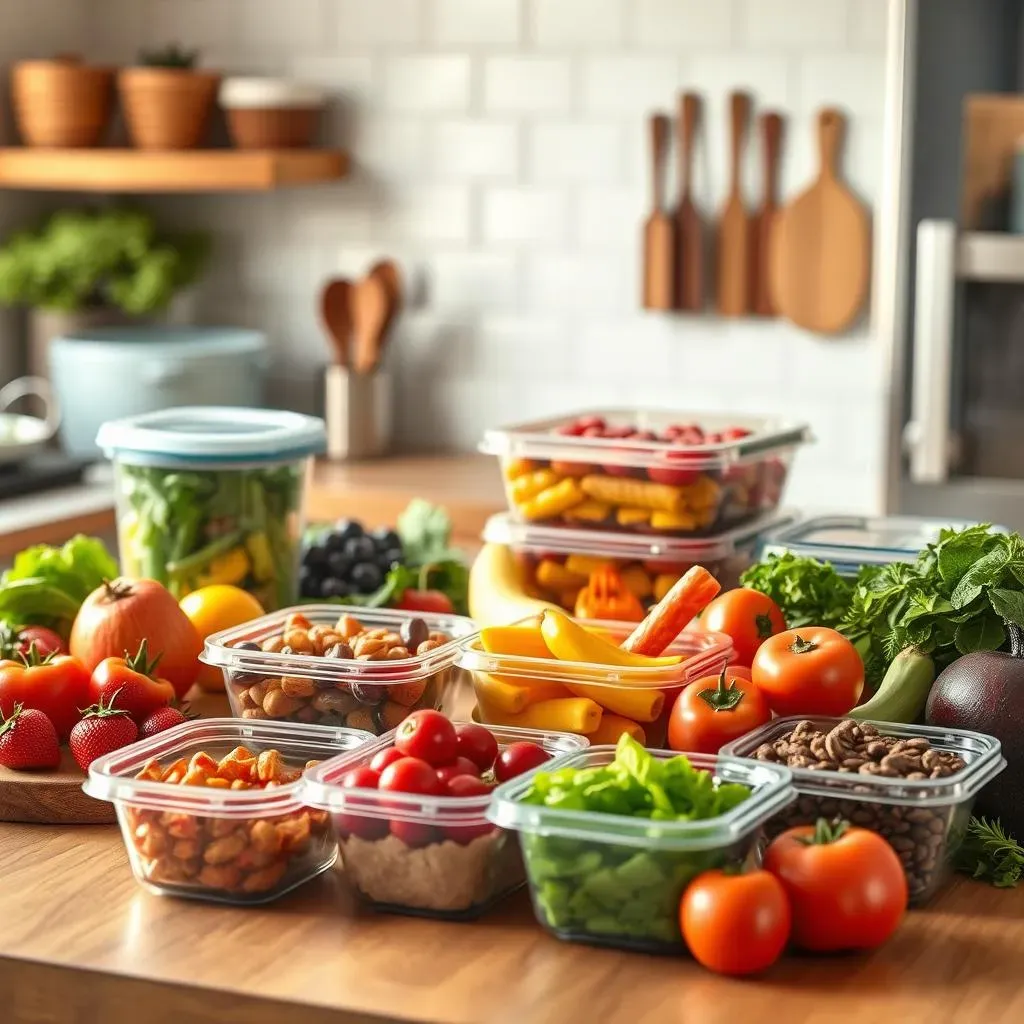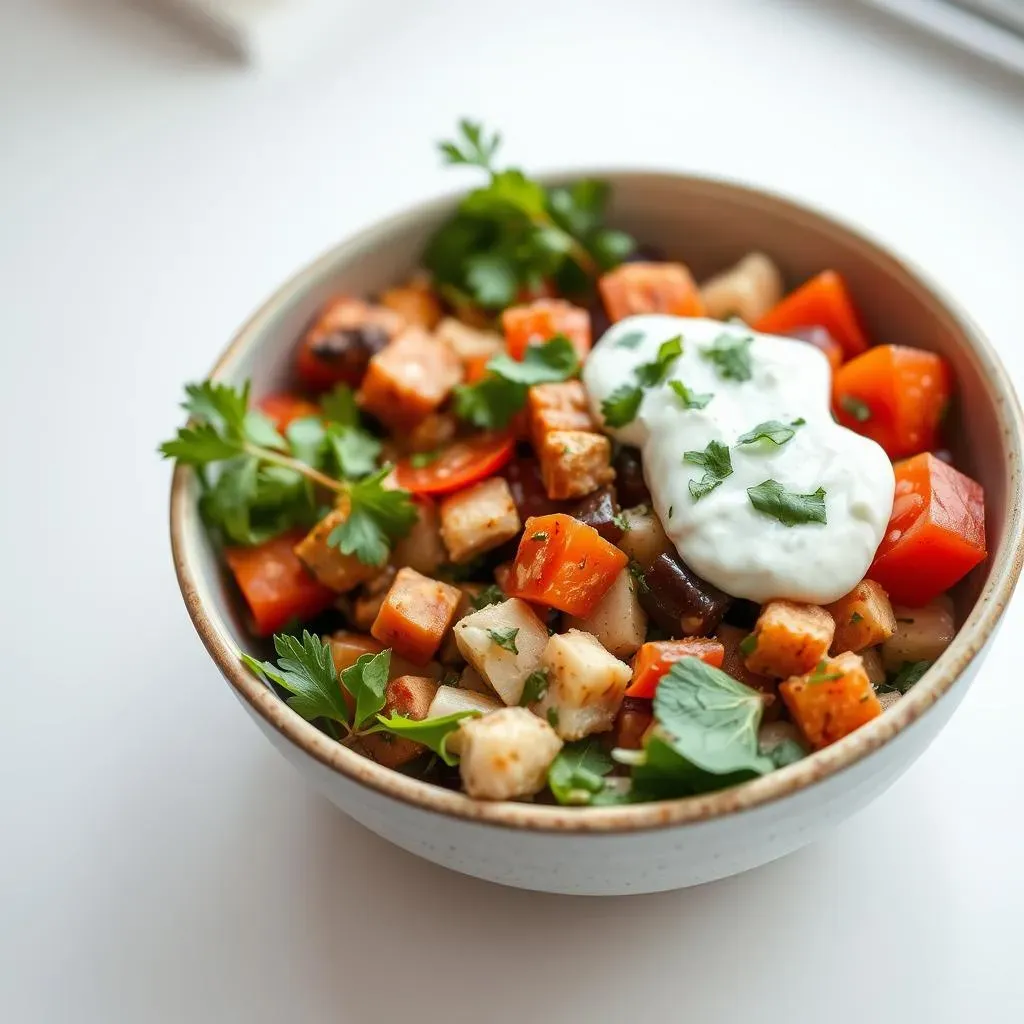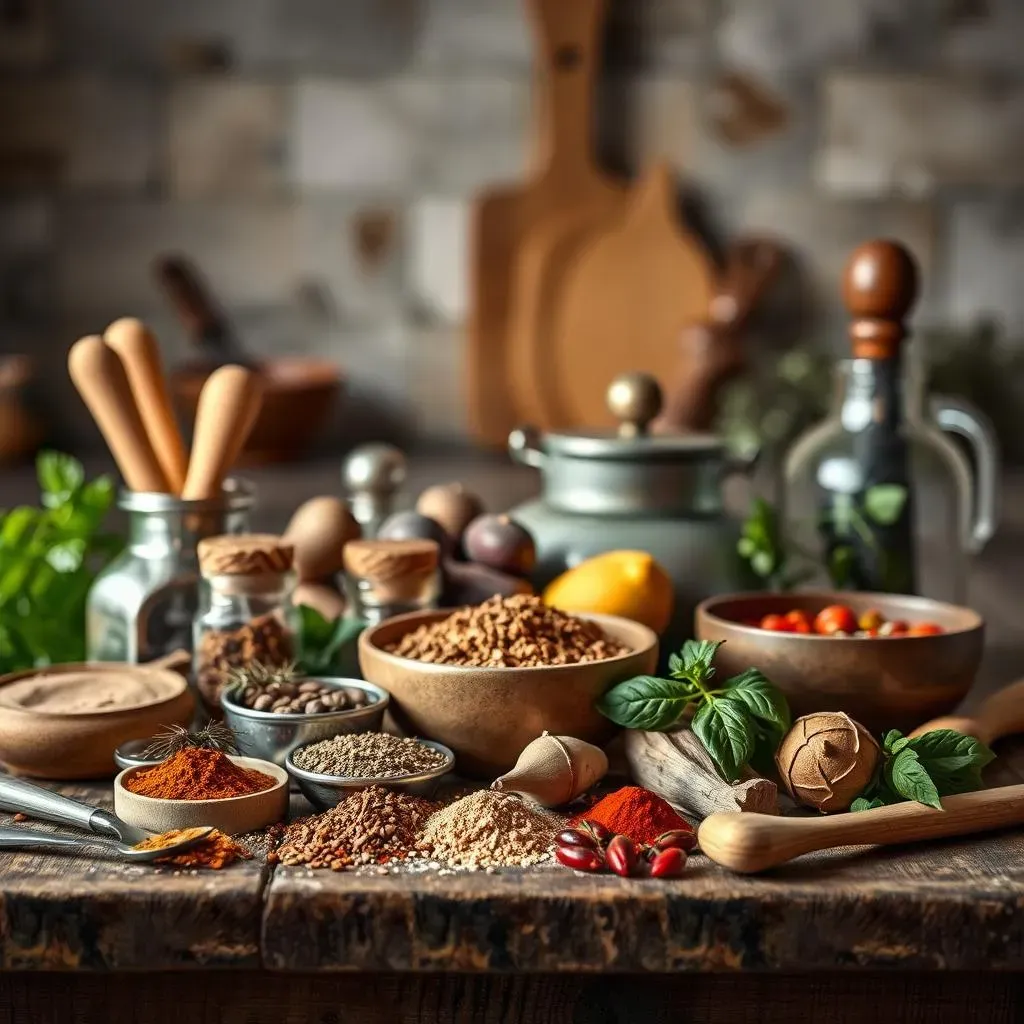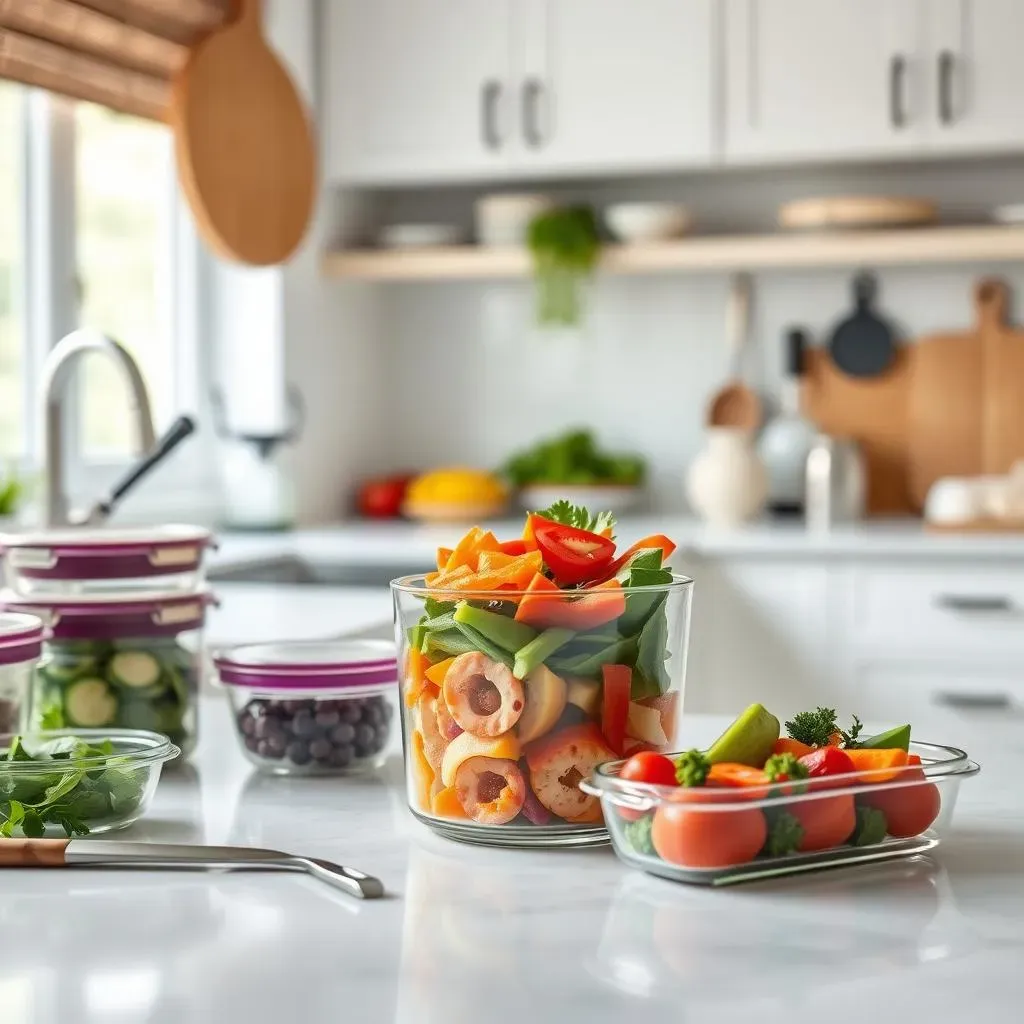Table of Contents
Ever feel like the week is a runaway train, especially when dinner rolls around? You're not alone. The constant question of "What's for dinner?" can be exhausting. That's where the magic of meal prep dinner ideas comes in. This isn't about slaving away in the kitchen all weekend. It's about smart, strategic cooking that frees up your evenings and helps you eat healthier without the stress. This article will walk you through the basics, starting with why meal prepping dinners is a total game-changer for busy folks, like you. We'll explore some beginner-friendly meal prep dinner ideas, move on to more advanced techniques, and share all the best tips for storing and reheating your meals so they taste just as good as the day you made them. Get ready to reclaim your evenings and enjoy delicious, home-cooked meals without the daily hassle. Let's get started and make those weeknight dinners something to look forward to!
Why Meal Prep Dinner Ideas Are a Game Changer

Why Meal Prep Dinner Ideas Are a Game Changer
Let's be real, the daily dinner dilemma is a legit struggle. You're juggling work, maybe kids, and a million other things. By the time 5 PM rolls around, the last thing you want to do is figure out what to cook. That's where meal prepping swoops in like a superhero. It’s not just about saving time, though that's a huge perk. It's about taking control of your food choices, reducing stress, and actually enjoying your meals. Think about it: no more last-minute takeout orders or staring blankly into the fridge. With some pre-planned meals ready to go, you're setting yourself up for success, and honestly, it’s kind of a power move.
It's like having a secret weapon against the chaos of the week. You know exactly what you're eating, which means less temptation to grab unhealthy options. Plus, it can save you a lot of money. How many times have you bought groceries only to have half of them go bad? Meal prepping helps you use up what you buy and avoid food waste. And let's not forget the mental peace. Knowing that dinner is already handled is a huge weight off your shoulders, so you can actually relax in the evening.
Benefit | Description |
|---|---|
Time-Saving | No more last-minute cooking or takeout runs during the week. |
Healthier Eating | You control ingredients, avoiding unhealthy processed foods. |
Stress Reduction | Eliminates the daily "what's for dinner?" panic. |
Money-Saving | Reduces food waste and impulse takeout orders. |
Mental Peace | Knowing dinner is ready allows for more relaxation. |
Easy Meal Prep Dinner Ideas for Beginners

Easy Meal Prep Dinner Ideas for Beginners
Start Simple: The Power of Bowls
so you're new to this whole meal prep thing? No sweat. Let's kick things off with something super easy: bowls. I’m talking about those customizable, throw-everything-in-a-dish kind of meals. The beauty of bowls is that they’re incredibly versatile. You pick a grain, a protein, some veggies, and a sauce, and boom, you have a satisfying meal. Think of it like building with Lego; you can swap out pieces to create something new each time. For example, you could do a Mediterranean bowl with quinoa, grilled chicken, cucumbers, tomatoes, and tzatziki sauce one day, and then switch to a Tex-Mex bowl with rice, black beans, corn, salsa, and avocado the next. It's all about mixing and matching what you like.
The best part? You don't need fancy cooking skills to pull this off. You can cook a big batch of grains like rice or quinoa, roast or grill some chicken or tofu, chop up your favorite veggies, and store everything separately. When it’s time to eat, you just throw it all together. It's quick, easy, and requires minimal cleanup, which is a win in my book. Plus, bowls are super portable, which is perfect if you need to take your lunch to work or school. It’s like a little portable party in a dish.
Bowl Component | Beginner-Friendly Options |
|---|---|
Grain | Rice, quinoa, couscous |
Protein | Grilled chicken, baked tofu, canned chickpeas, hard-boiled eggs |
Veggies | Cucumber, tomatoes, bell peppers, spinach, carrots |
Sauce | Store-bought salsa, hummus, vinaigrette |
Sheet Pan Magic: One Pan, Less Mess
Next up, let’s talk about sheet pan dinners. If bowls are the Lego of meal prep, sheet pan dinners are the equivalent of a one-pot wonder. You simply toss everything onto a baking sheet, season it up, and let the oven do its thing. It’s like the universe is doing the work for you. This approach is especially great because you can cook a whole meal at once, which means less time and effort in the kitchen. Imagine roasting chicken thighs and a bunch of colorful veggies like broccoli, sweet potatoes, and onions. The flavors mingle together, creating this delicious, savory dish that’s perfect for a weeknight dinner.
Sheet pan dinners are also incredibly customizable. You can swap out the protein, veggies, and seasonings to keep things interesting. For example, you could do a Mediterranean-inspired sheet pan with chicken, olives, feta, and cherry tomatoes, or a more Asian-style one with salmon, bok choy, and ginger. The possibilities are endless. And the best part? Cleanup is a breeze. You’ve just got one pan to wash, which means more time for you to kick back and relax. It’s practically a gift from the meal prep gods.
Prep Ahead and Enjoy: Simple Strategies
So, now that you have some ideas, let's talk about how to make this whole process smooth and efficient. The key is to do as much prep work as possible ahead of time. This could mean chopping veggies, cooking grains, or portioning out sauces. For instance, if you’re planning on making those awesome sheet pan dinners, chop all your veggies on Sunday, store them in airtight containers, and they’ll be ready to go when you need them. It's like creating your own little cooking assembly line, and it makes the actual cooking process so much faster and easier.
Another great tip is to utilize your freezer. If you have leftover cooked chicken or veggies, freeze them in individual portions. That way, you can easily grab them and throw them into your next meal. It's like having a stash of pre-cooked ingredients at your fingertips. And don’t forget about pre-made sauces and dressings. They can really save you a lot of time and effort. Look for healthy options at the grocery store, or whip up a big batch of your favorite sauce on the weekend. With a little bit of planning and some simple strategies, meal prepping can become a breeze, making your weeknight dinners something to actually look forward to. Remember, the goal is to make your life easier, not more complicated.
Advanced Meal Prep Dinner Techniques and Recipes

Advanced Meal Prep Dinner Techniques and Recipes
Layering Flavors: The Art of Marinating
Alright, so you’ve nailed the basics, and you’re ready to take your meal prep game to the next level? Let’s talk about marinating. It's not just about soaking meat in some liquid; it’s about building layers of flavor that’ll make your meals sing. A good marinade can transform a simple piece of chicken or tofu into something truly special. Think of it like giving your food a spa day, where it soaks up all the goodness and emerges feeling more flavorful and tender. For example, a lemon-herb marinade for chicken or a soy-ginger marinade for tofu can make a world of difference. The key is to let your protein marinate for at least a few hours, or even overnight, in the fridge. This allows the flavors to really penetrate the food and work their magic.
Don't be afraid to experiment with different combinations of acids, oils, and spices. You can use lemon juice, vinegar, or yogurt as the acid base, olive oil or sesame oil for richness, and herbs and spices like garlic, ginger, paprika, or cumin for depth. The possibilities are endless! And the best part is, you can prep your marinades on the weekend and have them ready to go when you need them. It's like having a secret flavor weapon at your disposal. Marinating is a small step that can elevate your meal prep game significantly, making your dishes more complex and enjoyable.
Mastering Batch Cooking: Efficiency is Key
Now, let's get down to batch cooking. This is where you cook large quantities of food at once, and then portion it out for multiple meals. It's like having a mini-restaurant in your kitchen, and it’s a game-changer for busy weeknights. Instead of making individual meals every day, you spend a few hours on the weekend cooking up a storm. For instance, you could roast a big batch of chicken or vegetables, cook a large pot of chili or soup, or prepare a tray of lasagna. The goal is to maximize your time and effort so that you have a variety of ready-to-eat meals throughout the week. It's like building your own personal food bank.
The key to successful batch cooking is planning. You need to think about what you want to eat for the week and make sure you have all the ingredients you need. It's also important to have enough storage containers to portion out your meals. You can use glass containers, plastic containers, or even reusable bags. And don't forget to label everything! It's easy to get confused when you have a bunch of different dishes in the fridge or freezer. With a little bit of planning and some smart batch cooking strategies, you can streamline your meal prep process and make your life so much easier. It’s all about working smarter, not harder.
Batch Cooking Tips | Description |
|---|---|
Plan Ahead | Decide what you want to eat for the week and create a shopping list. |
Maximize Recipes | Choose recipes that can be easily scaled up for larger batches. |
Storage Solutions | Use airtight containers, jars, or reusable bags for portioning. |
Label Everything | Clearly label each container with the contents and date. |
Freezer-Friendly Meals: Your Secret Weapon
Last but not least, let's talk about freezer-friendly meals. This is where you can really unleash your inner meal prep ninja. The freezer is your best friend when it comes to extending the shelf life of your meals and avoiding food waste. You can freeze almost anything, from soups and stews to casseroles and even individual portions of cooked grains and proteins. For example, you can make a big batch of lasagna, portion it out into individual servings, and freeze them for later. Or you can freeze leftover chili, soup, or sauces in freezer-safe bags or containers. It's like having a stockpile of delicious meals waiting for you whenever you need them.
The key to freezing meals successfully is to let them cool down completely before putting them in the freezer. This helps prevent freezer burn and maintains the quality of the food. You should also use freezer-safe containers or bags and make sure to label everything clearly with the date. And when it comes time to reheat your frozen meals, you can thaw them in the fridge overnight or use the microwave or oven. With a little bit of planning and some smart freezing techniques, you can have a steady supply of delicious, home-cooked meals at your fingertips. It’s the ultimate meal prep hack. “The freezer is your friend, not a place where leftovers go to die.” - Some wise meal prepper, probably.
Tips for Storing and Reheating Your Meal Prep Dinners

Tips for Storing and Reheating Your Meal Prep Dinners
so you’ve cooked up a storm and you’ve got all these amazing meals prepped and ready to go. Now, the real challenge is keeping them fresh and delicious until you’re ready to eat them. That’s where proper storage and reheating come into play. It's like having a well-organized pantry; everything is in its place, and you know exactly what you have. First things first, let's talk about containers. You want to use airtight containers to prevent your food from drying out or absorbing weird fridge odors. Glass containers are great because they don’t stain or retain smells, but plastic containers work too, as long as they’re BPA-free. And always, always let your food cool down completely before putting it in the fridge or freezer. This helps prevent condensation and keeps your meals tasting their best. Trust me, nobody likes soggy food.
When it comes to reheating, the method you choose can make a big difference in the texture and flavor of your meals. For most meals, the microwave is the quickest and easiest option, but it can sometimes leave your food a little bit unevenly heated. If you have more time, using the oven or a stovetop can produce better results, especially for things like casseroles or roasted vegetables. For soups and stews, the stovetop is usually the best way to go, as it allows for gentle and even heating. And here's a pro tip: when reheating in the microwave, add a splash of water or broth to your meal to prevent it from drying out. It’s like giving your meal a little spa treatment before you eat it.
Storage Tip | Description |
|---|---|
Airtight Containers | Prevent food from drying out and absorbing odors. |
Cool Down First | Avoid condensation and maintain food quality. |
Label Everything | Include the date and contents for easy identification. |
Now, let's talk about specific types of meals. For grain bowls, it’s best to keep the components separate until you're ready to eat. This prevents the grains from getting soggy. Store the cooked grains, protein, veggies, and sauce in separate containers, and then assemble your bowl just before serving. It’s like having a build-your-own-bowl station in your fridge. For sheet pan dinners, you can store the cooked vegetables and protein together in one container. When reheating, you can either microwave them or put them back on a sheet pan in the oven for a few minutes to crisp them up. And for freezer-friendly meals, make sure to use freezer-safe containers or bags, and label them clearly with the date. When reheating, thaw the meals in the fridge overnight or use the microwave or oven for a quick reheat. It’s like having a secret stash of delicious, home-cooked meals ready to go whenever you need them. "Proper storage is the key to unlocking the full potential of your meal prep creations." - Some wise chef, probably.
And a quick word on food safety: always make sure to reheat your meals to a safe internal temperature to avoid any food-borne illnesses. Use a food thermometer to make sure that your food is heated to the proper temperature. And if you're in doubt about whether a meal is still good, it’s always better to err on the side of caution and throw it out. Remember, meal prepping is all about making your life easier and healthier, so make sure you’re following all the necessary food safety guidelines. With a little bit of planning and some smart storage and reheating techniques, you can enjoy your meal prep creations all week long, and without any stress or food safety worries. It's all about creating a system that works for you.
- Microwave: Quick and easy, but can cause uneven heating.
- Oven: Best for casseroles, roasted veggies, and crispy textures.
- Stovetop: Ideal for soups, stews, and gentle reheating.
Wrapping Up Your Meal Prep Dinner Journey
So, there you have it. Meal prep dinner ideas aren't some secret code only chefs know. It's a practical way to take control of your weeknight dinners, save time, and maybe even discover some new favorite meals. Whether you're just starting out with simple bowls or diving into more complex recipes, remember the key is to plan ahead and find what works best for you. Don't be afraid to experiment, tweak recipes, and most importantly, enjoy the process. The goal isn't perfection, it's about making your life a little easier and your dinners a whole lot tastier. Now go forth, prep those meals, and reclaim your evenings!